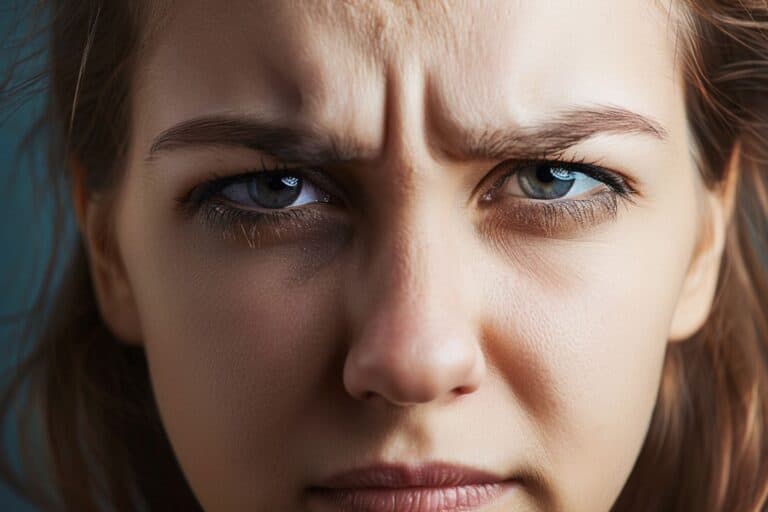Welcome to the world of Botox, a popular treatment both for enhancing beauty and improving health. Here, we’ll explore how Botox works, diving into its cosmetic and medical benefits, and answering all your burning questions. Get ready to learn everything you need to know about this fascinating treatment.
What is Botox?
Botox is more than just a cosmetic enhancer; it’s a refined form of a protein made from Botulinum toxin, which is produced by the bacterium Clostridium botulinum. Initially discovered in the late 1800s, Botox has evolved from a toxin into a powerful therapeutic tool.
It’s renowned for its ability to smooth wrinkles by temporarily paralyzing muscles, but its applications have grown to include various medical treatments. Botox is trusted for its safety and effectiveness when administered by qualified professionals.
The Science Behind Botox
Botox functions on a fascinating level of neuromuscular interaction. When injected, the Botulinum toxin type A—commonly known as Botox—acts primarily on nerve endings. It targets the nerve terminals that control muscle contraction.
Here’s what happens: the toxin blocks the release of acetylcholine, a neurotransmitter that’s essential for muscles to contract. Without acetylcholine, the muscle fibers do not receive the ‘contract’ command, leading them to relax and soften. This relaxation effect helps smooth out wrinkles and can also alleviate muscle spasms in medical conditions.
The action of Botox is highly localized. It affects only the specific muscles into which it is injected, which allows for targeted treatment of ailments ranging from fine lines on the forehead to muscular disorders.
The effects of Botox are temporary because nerve endings eventually regenerate…
The effects of Botox are temporary because nerve endings eventually regenerate, allowing acetylcholine to be released again, which means the muscle contraction returns over time. This temporary nature of the treatment is why repeated sessions are needed to maintain its effects.
Cosmetic Applications of Botox
Botox is a powerful tool in cosmetic medicine, primarily used to address facial wrinkles and lines, which are often the first signs of aging. The areas most commonly treated with Botox for cosmetic reasons include:
Forehead Lines
These are horizontal lines that develop across the forehead due to repeated facial expressions like raising the eyebrows. Botox relaxes the frontalis muscle, smoothing these lines and preventing the formation of deeper furrows.
Crow’s Feet
Located at the outer corners of the eyes, these lines appear from smiling, squinting, and other expressions involving the orbicularis oculi muscles. Botox injections here help soften these lines, giving a more rested and youthful appearance to the eye area.
Frown Lines
Also known as glabellar lines or “11 lines” between the eyebrows, these are caused by frowning, scowling, or concentration. Botox eases the contraction of muscles in this area, helping to reduce the vertical lines and prevent them from becoming more pronounced.
Bunny Lines
The fine lines on either side of the nose that appear when laughing or scrunching the nose. Small amounts of Botox can smooth out these wrinkles.
Lip Lines
Small lines around the lips, often exacerbated by smoking or pursing the lips, can also be treated with Botox to create a smoother lip contour.
The procedure involves minimal discomfort, and the results can significantly enhance one’s appearance without the need for invasive surgical procedures. The effects of Botox in cosmetic applications can also boost confidence and contribute to a more positive self-image.
Medical Uses of Botox
Beyond its cosmetic popularity, Botox has significant medical applications approved by the FDA, beneficial in treating a range of conditions:
Chronic Migraines
For those who experience migraines more than 15 days a month, Botox can be a game-changer. It is injected around the pain fibers involved in headaches, blocking the release of chemicals involved in pain transmission. This prevents the activation of pain networks in the brain.
Cervical Dystonia
This painful condition involves involuntary contractions of the neck muscles. Botox injections help ease these contractions and relieve pain by relaxing the muscles.
Overactive Bladder
Botox can be used in adults who experience frequent urination, urgency, and incontinence. Injections into the bladder muscle relax it, increasing storage capacity and reducing symptoms.
Excessive Sweating (Hyperhidrosis)
For individuals suffering from excessive sweating, Botox can be a relief. It is injected into the skin to block the nerves that stimulate the sweat glands. Commonly treated areas include underarms, hands, feet, and face.
Eye Muscle Conditions
Such as strabismus (crossed eyes) and blepharospasm (uncontrollable blinking) can also be treated with Botox, which helps align the eyes or reduce abnormal blinking by relaxing the muscles.
The Procedure of Administering Botox
The procedure for administering Botox must be carried out by a qualified healthcare professional in Chattanooga trained in the correct techniques. The process begins with a consultation, during which the practitioner assesses the client’s facial features and discusses the desired outcomes. This assessment is crucial as it determines the specific muscles to target to achieve the best results.
During the procedure, the skin area to be treated is thoroughly cleaned, and a topical anesthetic may be applied to minimize discomfort. The Botox is then injected into predetermined points on the face or other parts of the body using a fine needle. Precision is key here; the amount of Botox used and the exact injection sites can greatly influence the outcome.
Post-treatment, patients are advised to avoid rubbing or massaging the treated areas for several hours. This precaution helps prevent the spread of Botox to adjacent muscles, which could cause unwanted paralysis. Patients are also advised to remain upright for a few hours post-injection to promote optimal localization of the toxin.
FACT
The excessive amount of Botox injected or incorrect placement can lead to unnatural results or complications.
Results and Expectations
The results from Botox injections are not immediate and usually take several days to develop. Initial changes might be noticeable within 24 to 48 hours, but the full effect typically becomes visible after about two weeks. The results vary based on individual factors such as the depth of the wrinkles, the strength of the muscles treated, and the individual’s age and lifestyle.
The expected duration of Botox’s effects is approximately 3 to 4 months, although this can vary. Factors influencing the longevity of the results include the dosage of Botox used, the patient’s metabolic rate, and how active the treated muscles are. Individuals with more expressive faces might notice a quicker return of muscle movement.
Regular follow-up treatments are recommended to maintain the smooth appearance of skin or the relief from medical symptoms. During these sessions, the practitioner can adjust the treatment plan based on the results of previous injections, ensuring each treatment builds effectively on the last.
Risks and Side Effects
While Botox is generally safe, it’s crucial to be aware of potential risks and side effects. Common side effects include temporary bruising, discomfort at the injection site, or a slight headache.
In rare cases, Botox can cause more significant issues like eyelid drooping, muscle weakness, or even symptoms that mimic the flu. However, these serious side effects are uncommon and typically associated with the treatment technique or dosage.
Choosing an experienced and qualified provider in Chattanooga is essential to minimize risks and ensure the safest and most effective treatment.
Frequently Asked Questions
Is Botox safe?
Yes, when administered by a qualified professional, Botox is considered safe. It has been approved by the FDA for both cosmetic and medical uses. However, it’s essential to discuss your medical history with your provider to ensure it’s safe for you.
How often should treatments be repeated?
Botox effects typically last about 3 to 4 months. To maintain the desired effect, you’ll need regular follow-up injections. The frequency can vary based on your individual response to the treatment and the area treated.
Can Botox be reversed?
No, the effects of Botox are not reversible. However, the effects are temporary, and normal muscle function gradually returns as the Botox wears off.
Who should avoid Botox?
Individuals who are pregnant, breastfeeding, or have a neurological disease should avoid Botox. Additionally, if you have allergies to any ingredients in Botox or have had allergic reactions to other botulinum toxin products, you should not receive the treatment.
Conclusion
Understanding how Botox works gives you the power to make informed decisions about whether it’s the right choice for your cosmetic or medical needs. With its proven safety record and effectiveness, Botox continues to be a popular choice for those looking to reduce wrinkles or treat certain medical conditions. Always consult with a Chattanooga healthcare provider to discuss your specific situation and to ensure the best possible results from your Botox treatments.

